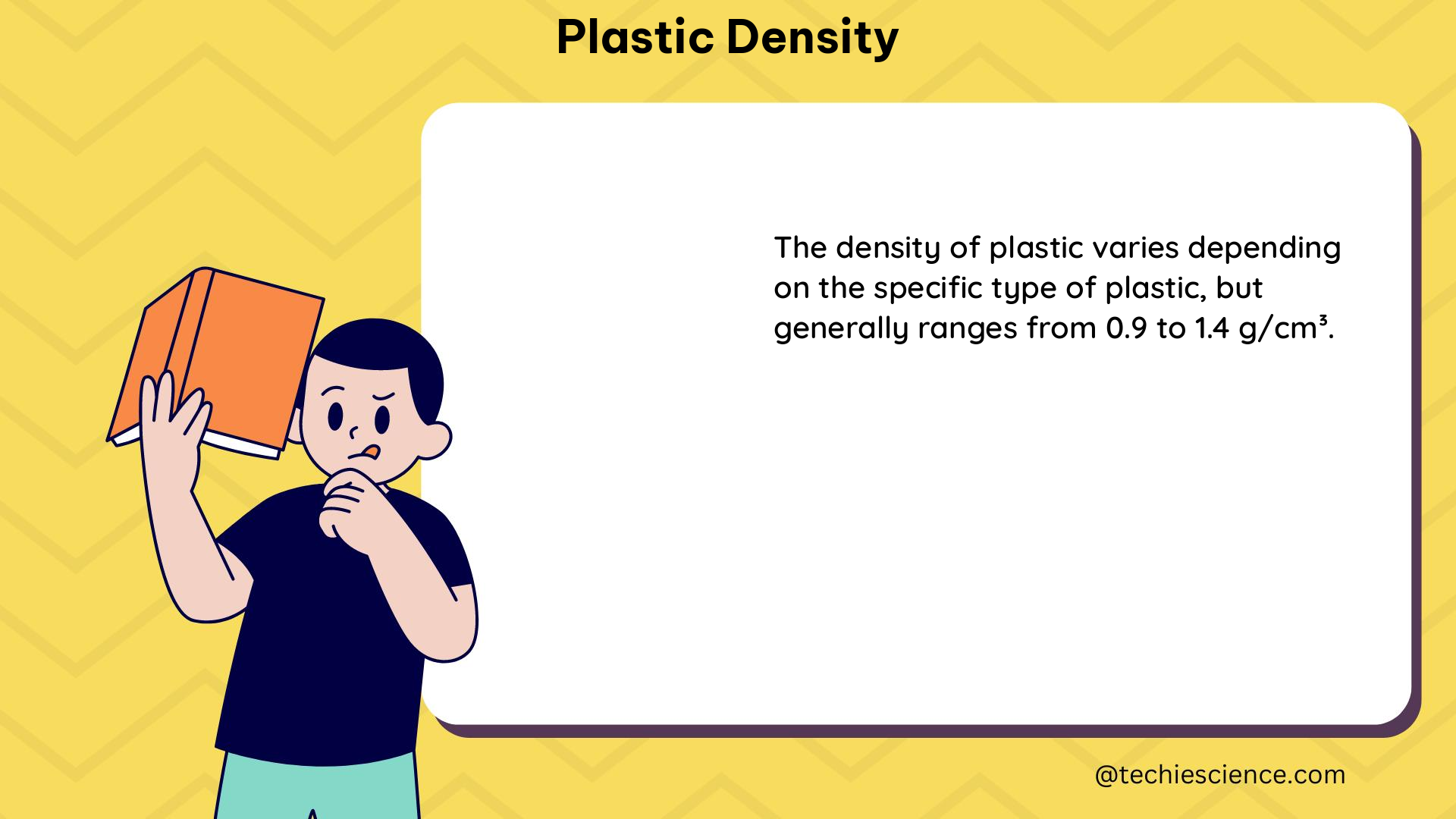Plastic density is a crucial property that determines the behavior and applications of various plastic materials. This comprehensive guide delves into the intricacies of plastic density, providing a wealth of technical details and practical examples to help you understand this fundamental concept in the world of plastics.
Understanding Plastic Density
Plastic density refers to the mass of a plastic material per unit volume. It is a crucial property that affects the behavior of plastics in various applications, including buoyancy, sinking, and sorting in recycling processes. The density of plastics can vary significantly depending on their chemical composition and the additives used during manufacturing.
Common Plastic Densities
According to the sources provided, the density of some common plastics is as follows:
| Plastic Type | Density Range (g/cm³) |
|---|---|
| Polyethylene (PE) | 0.910 – 0.960 |
| Polypropylene (PP) | 0.890 – 0.920 |
| Polystyrene (PS) | 1.040 – 1.090 |
| High-Density Polyethylene (HDPE) | 0.941 – 0.970 |
| Low-Density Polyethylene (LDPE) | 0.910 – 0.930 |
| Polyvinyl Chloride (PVC) | 1.380 – 1.410 |
It’s important to note that these density values can vary based on the specific type of plastic, the additives used, and the manufacturing processes involved.
Theoretical Foundations

Archimedes’ Principle
The Archimedes’ principle states that the buoyant force on an object submerged in a fluid is equal to the weight of the fluid displaced by the object. This principle is crucial in understanding the behavior of plastic objects in various fluids, such as water or seawater.
Density Formula
The density of a substance can be calculated using the formula:
ρ = m/V
where ρ is the density, m is the mass, and V is the volume.
Practical Applications and Examples
Floating or Sinking in Water
Consider a plastic bottle made of HDPE with a mass of 500 grams and a volume of 1 liter (1000 cm³). The density of the bottle can be calculated as:
ρ = m/V = 500 g / 1000 cm³ = 0.5 g/cm³
Since the density of HDPE is higher than that of water (1 g/cm³), the bottle will sink in water.
Floating or Sinking in Seawater
A plastic fishing buoy has a mass of 2 kg and a volume of 20 liters. What is the density of the buoy, and will it float or sink in seawater?
First, we need to convert the volume to cubic centimeters:
20 liters = 20,000 cm³
Then, we can calculate the density of the buoy:
ρ = m/V = 2 kg / 20,000 cm³ = 0.1 g/cm³
Since the density of the buoy is much lower than that of seawater (approximately 1.025 g/cm³), it will float in seawater.
Figures and Data Points
According to a study by Jambeck et al. (2015), approximately 8 million metric tons of plastic waste entered the ocean in 2010. This amount is equivalent to dumping the contents of a garbage truck into the ocean every minute.
Values and Measurements
The density of plastics can be measured in various units, including g/cm³, kg/m³, and lb/gal. For example, the density of PE can range from 0.910 to 0.960 g/cm³, while the density of PVC can range from 1.380 to 1.410 g/cm³.
References
- Arena, I., et al. (2003). “Plastics in the marine environment: Sources, fates, impacts and microplastics.” Marine Pollution Bulletin, 46(5), 505-510.
- NOAA National Centers for Environmental Information. (2023). Marine Microplastics. Retrieved from https://www.ncei.noaa.gov/products/microplastics
- Jambeck, J.R., et al. (2015). “Plastic waste inputs from land into the ocean.” Science, 347(6223), 768-771.
- Geyer, R., et al. (2017). “Production, use, and fate of all plastics ever made.” Science Advances, 3(7), e1700782.
This comprehensive guide has provided a deep dive into the world of plastic density, covering the theoretical foundations, practical applications, and real-world data points. By understanding the intricacies of plastic density, you can better navigate the complexities of plastic materials and their behavior in various environments.

The lambdageeks.com Core SME Team is a group of experienced subject matter experts from diverse scientific and technical fields including Physics, Chemistry, Technology,Electronics & Electrical Engineering, Automotive, Mechanical Engineering. Our team collaborates to create high-quality, well-researched articles on a wide range of science and technology topics for the lambdageeks.com website.
All Our Senior SME are having more than 7 Years of experience in the respective fields . They are either Working Industry Professionals or assocaited With different Universities. Refer Our Authors Page to get to know About our Core SMEs.